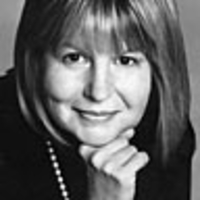A fierce literary woman with a penchant for married men, Margaret Fuller was ultimately torn between motherhood and her final career as a political reporter. While as modern as mommy wars, she was also an old-fashioned prude. We remember her for her connections to the New England transcendentalists and their friends—Emerson, Hawthorne, Thoreau, Poe, and eventually Horace Greeley—and for her powerful indictment of women’s social position in the 1845 Woman in the Nineteenth Century, first published as The Great Lawsuit. Man Versus Men. Woman Versus Women, a pamphlet that became the part of feminism’s origin myth.

Fuller, who drowned in a shipwreck off Fire Island in 1850, was famous for her passions, her politics, and her prose, but she has been been largely forgotten by history. A new, fascinating, and well-researched biography by American scholar Megan Marshall, following another distinguished biography by Pulitzer Prize winner John Matteson last year, should help to remedy Fuller’s obscurity.
The only female member of the famous transcendentalists, Fuller rebelled against conventional women’s roles, refusing to follow the well-worn path from moronic courtship to a marriage in which she would be a legal possession who had sworn obedience to her husband and whose principal pride would be in the accomplishments of her family. Fuller craved her own accomplishments. She was raised by an eminent lawyer father who recognized her intellect and educated her as if she was a boy, but then decided to move to a farm in Groton, Massachusetts, so that his children might be raised as farmers—a romantic but ultimately disastrous idea for Margaret. Fluent in Greek, Latin, and German, she began writing while still in Groton and soon became the editor of The Dial, the transcendentalists’ magazine she started with Emerson that published Thoreau as well as Bronson Alcott.
ADVERTISEMENT
Fuller had an instinct, “from a very early age ... that I was not born to the common womanly lot,” Marshall explains. “I knew I should never find a being who would keep the key to my character; that there would be none on who I could always lean, from whom I could always learn.” She had sexy friendships with Nathaniel Hawthorne, who wrote fictional portraits of her in The Blithedale Romance and in The Scarlet Letter. She was the Emersons’ long-term summer houseguest, sleeping in the bedroom next to her host’s downstairs study. Over the decade of their friendship, Fuller and Emerson wrote letters that show two alternately eager and frightened people. “We lead a life of glimpses & glances,” Emerson apologetically wrote of their time in his house. She accused him of being cold—arctic; he promised to be warmer.
These days, Memoir—the upstart form that is universally deplored and even more universally read—is pulling at the skirts of the ancient dowager Biography. Thousand-page monoliths are giving way to shorter, more romantic books often featuring the writer as a character. Megan Marshall writes by the Old Rules. Her archival research is impressive: seven libraries, more than 50 pages of footnotes. She does not appear in the pages of the book, and the reader has little idea what drew her to the material or how she is picking the facts that tell her story.
“Why do women love bad men?” Marshall asks as Fuller careens from one disastrous emotional entanglement to another. Originally titled The Passion of Margaret Fuller, Marshall’s book occasionally reads like an 1830s version of Sex and the Country. Part of Fuller’s rebellion may have been based on her inability to conform. “Margaret was still a precocious half-child-half-adult, and anyone who chose to evaluate her in these days solely on the basis of manners and appearance was sure to find her lacking,” Marshall explains. “She had not bothered to notice that the fashion for a full head of curls had given way to a mere fringe of ringlets around the face ... She had done her best job of corseting to show off her waist, but hers wasn’t thin.”
In the meantime, Margaret had to make a living. Her “conversations,” intimate talks based on literature, which Emerson and Bronson Alcott also gave, were apparently brilliant. Yet in a strange display of reticence, she refused to get on stage and lecture as the men did. Instead she had conversations in women’s homes in which she got the talk going and then sat back and listened. “For Margaret did not want to be listened to,” Marshall tells us, “she dreaded the feeling of being on display like ‘a paid Corinne,’ the heroine of a novel by her idol Madame de Staël, who entertained parlor audiences ... holding forth on the splendors of Italian art.”
Fuller took George Sand and Madame De Staël as her models, but she wasn’t able to achieve their freedom when it came to sex. First she was in love with George David, then with his friend James Freeman Clarke. Then she fell in love with Sam Ward, who rejected her and married her friend Anna. In the meantime, she had introduced her pretty young friend Caroline Sturgis to Emerson, who adored her ... too much for Margaret’s liking. When she moved to New York City to be the editor of Horace Greeley’s Herald Tribune, she fell for banker James Nathan, who wanted Margaret as an uptown mistress while he kept another woman downtown. But when Nathan finally, after dozens of meetings and hundreds of overheated love letters, made a sexual move, Fuller was horrified.
According to Marshall, the strength of Fuller’s writing should assure her immortality. “The extraordinary power and enduring appeal of Woman in the Nineteenth Century lay in Margaret’s prescient reading of women’s lives, related in anecdote and biographical summary with the same expansive sympathy she had applied as a critic to texts by her favorite writers.” It is Marshall’s prescient reading of Fuller’s life that makes this book worthy of its subject.






